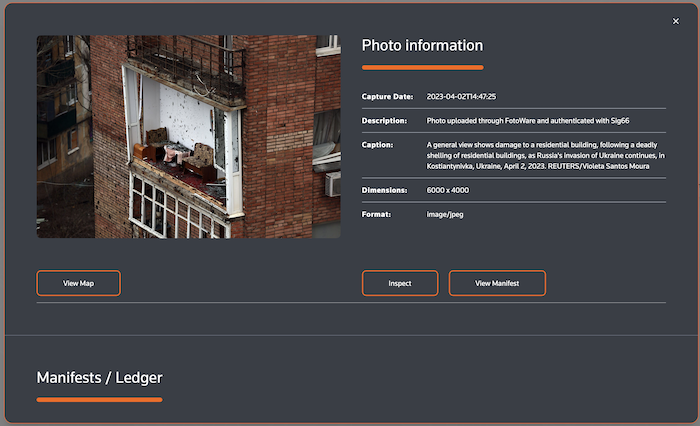
Reuters is trialling a new tool that can help consumers verify the origins and authenticity of an image.
Instead of analysing the picture retroactively to establish its provenance, the news agency teamed up with Canon and the academic research lab Staling Lab at Stanford to test new cameras that embed cryptographic data into the image right from its creation.
Here is how it works. When capturing a picture, a prototype Canon camera assigns each photograph and its time, date and location a unique identifier, called hash value. This data is then cryptographically signed to establish its authenticity.
The pictures are then registered into a public blockchain along with any subsequent modification by the Reuters picture desk. This continues until the news agency distributes the photo with all its metadata, edit history and blockchain registration embedded in it. To verify the picture, news customers can compare the unique identifier (hash value) on the public ledger.
Listen: Blockchain: does transparency equal trust?
To explain it in simpler terms, blockchain is a growing list of records – called blocks – which are encrypted and linked. Each block also contains a timestamp and other information about the origin of data. By design, a blockchain is resistant to modification of the data it contains, which may come in handy when we need to protect news content from tampering or even censorship.

Another advantage of data stored in a blockchain is that it has been recorded and validated by other users, who can be humans or computers, thus helping verification.
This is particularly important as people are increasingly worried about their ability to distinguish between real and fake news on the internet. Advances in generative AI made creating and disseminating rubbish easier and cheaper than ever before, which has only intensified these concerns.
The downside is that this verification process requires a fairly good understanding of the blockchain technology, which is hardly a skill your average reader has.
Another downside is that the tech is underpinned by a decentralised system that relies on a gazillion energy-hungry computers. Although it is hard to calculate the carbon footprint of this new tool, any benefit it has for combatting misinformation may need to be weighed against its environmental impact.
Free daily newsletter
If you like our news and feature articles, you can sign up to receive our free daily (Mon-Fri) email newsletter (mobile friendly).
Related articles
- Why The Lincolnite closed down, with Daniel Ionescu
- 10 creative ways to interview celebrities and experts
- Blockchain can help news publishers fight risks posed by fake news websites
- Navigating the future of food journalism: six key challenges and solutions
- RISJ Digital News Report 2024: Three essential points for your newsroom









